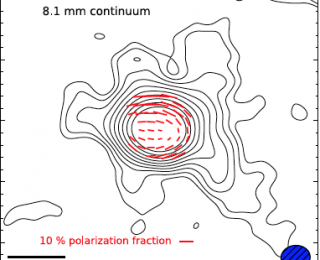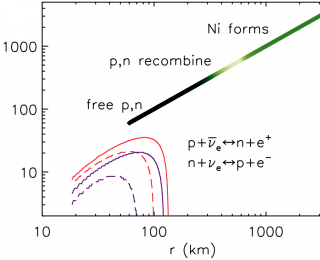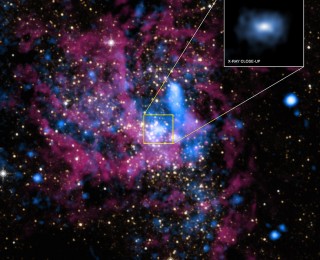
by Michael Zevin | Nov 17, 2015 | Daily Paper Summaries
Magnetic fields are believed to play an integral role in the formation of stars and protoplanetary disks. Today’s article took the one of the closest looks ever at the magnetic field around a baby star and unveiled its underlying structure.

by Brett Deaton | Feb 23, 2014 | Daily Paper Summaries
There aren’t many places in the universe that you can find a bunch of free neutrons not already trapped inside a nucleus—except in neutron stars. Luckily, neutron stars in violent mergers with other neutron stars, or with black holes, tend to disperse a little bit of their matter into the interstellar medium. Tidal forces eject some matter as the two objects swing around each other in their final orbits. Then, if an accretion disk forms, winds blown off the surface of the disk disperse even more matter. Surman and her colleagues look at the nucleosynthesis that occurs in this latter process, and find something surprising.

by Shannon Hall | Sep 8, 2013 | Daily Paper Summaries
Sgr A* – the supermassive black hole sitting in the center of the Milky Way – is often referred to as a ‘starved’ black hole, meaning that it swallows very little of the nearby cosmic gas and dust. The authors of this paper observed Sgr A* with the Chandra X-ray telescope for 3 mega seconds, throughout which only 1% of the gas available to Sgr A* actually accreted onto the black hole. It swallows cold gas, while rejecting hot gas – ejecting the matter back into space.



